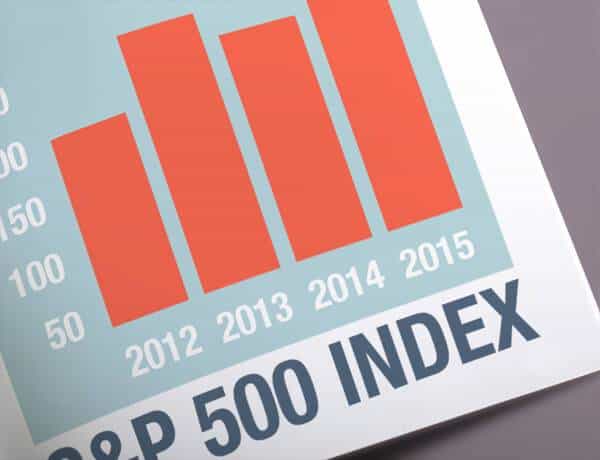Please provide your information and submit this form. Our team will be in touch with you shortly.
Did you know that more than $9.9 trillion in assets are benchmarked to the Standard & Poor’s 500 Composite Index, including $3.4 trillion in index assets?1,2
The S&P 500 is ubiquitous – we see it on the news, read about it in the newspapers, and very likely, see some of our own investments’ performance compared against it. For an index that represents approximately 80% of the value of the U.S. equity market, it may be worthwhile to gain a better understanding of how it works.1
Cap & Criteria
The index, as we know it today, was introduced in 1957 and is maintained by the Standard & Poor’s Index Committee. Contrary to popular belief, it is not comprised of the 500 largest companies in America, but is a collection of large-cap stocks representing a broad range of market sectors, including, technology, energy, health care, and consumer staples, among others.3
There are a number of criteria a company must meet to be considered for inclusion in the index. Some of these criteria include the following: it must be a U.S. company, have a market capitalization of $5.3 billion or more, be an industry leader that is representative of a particular market sector, and be financially viable.3
Changes Over Time
Another common misconception is that the index is a static one. In fact, companies will be removed, from time to time, for reasons that include violation of one or more of the criteria used for adding companies or because of a merger, acquisition, or significant restructuring, including bankruptcy.
The turnover in the index’s constituent companies was 5.2% in 2017 (per the most recent data available). According to one study, if current trends continue, nearly half of the companies currently comprising the S&P 500 will be replaced over the next 10 years.4
Add and Subtract
When changes are made to the index, many mutual funds and exchange-traded funds that seek to replicate the index may have to sell stocks that are being removed and buy the stocks that are being added in order to track the index. Keep in mind that amounts in mutual funds and ETFs are subject to fluctuation in value and market risk. Shares, when redeemed, may be worth more or less than their original cost.5
Mutual funds and exchange-traded funds are sold only by prospectus. Please consider the charges, risks, expenses, and investment objectives carefully before investing. A prospectus containing this and other information about the investment company can be obtained from your financial professional. Read it carefully before you invest or send money.
It should be emphasized that investors cannot invest in an index. Also, index performance is not indicative of the past performance of a particular investment, and past performance does not guarantee future results. Investment choices designed to replicate any index may not perfectly track it, and their returns will be reduced by fees and expenses.
1. US.Spindices.com, 2020.
2. The S&P 500 Composite index (total return) is an unmanaged index that is generally considered representative of the U.S. stock market. Index performance is not indicative of the past performance of a particular investment. Past performance does not guarantee future results.
3. TheBalance.com, 2019
4. Innosight, 2020
5. Keep in mind that the return and principal value of stock prices will fluctuate as market conditions change. And shares, when sold, may be worth more or less than their original cost.


